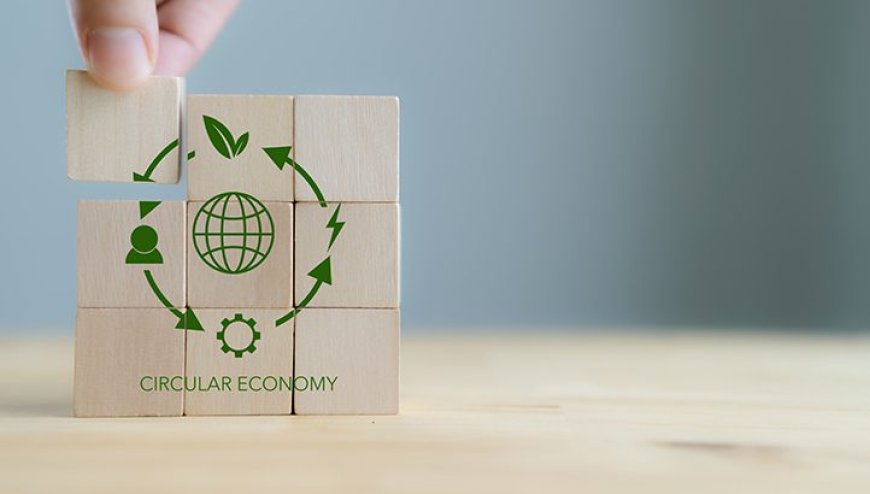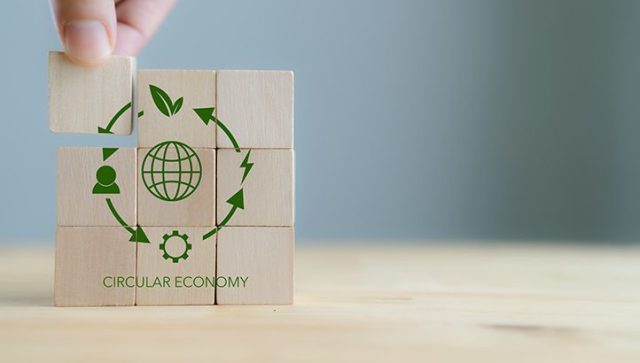The Circular Economy: Lessons from India’s Thriving Repair and Reuse Culture – The CSR Journal
The Circular Economy: Lessons from India's Thriving Repair and ... thecsrjournal


The Circular Economy: Lessons from India’s Thriving Repair and Reuse Culture
Introduction
India, a land of diversity and innovation, has long been celebrated for its rich cultural heritage. Beyond its cultural tapestry, India also boasts a thriving repair and reuse culture deeply rooted in its societal fabric. In recent years, the world has turned its attention towards the principles of the circular economy as a sustainable alternative to the traditional linear “take-make-dispose” model. India’s robust practices of repairing electronics and repurposing materials offer valuable lessons and insights that align seamlessly with the core principles of the circular economy. In this article, we delve into India’s remarkable repair and reuse culture, exploring how it harmonizes with the circular economy, and why these practices are worthy of global recognition.
Repairing Electronics: A Time-Honoured Tradition
India has a time-honoured tradition of repairing electronics that dates back to the days of yore. In Indian cities and towns, one can easily find bustling markets and small repair shops where skilled technicians meticulously mend a wide array of electronic devices. Whether it’s a malfunctioning smartphone, a worn-out laptop, or a vintage radio, these artisans possess an innate ability to diagnose, repair, and revive even the most seemingly hopeless gadgets. This practice not only extends the lifespan of electronics but also reduces electronic waste, a pressing global concern.
One of the fundamental tenets of the circular economy is to maximize product lifespan, and India’s thriving repair culture embodies this principle beautifully. By repairing electronics instead of discarding them, Indians not only save money but also contribute to a sustainable future by reducing electronic waste. Furthermore, this culture of repair fosters local entrepreneurship, as many of these technicians run small, independent repair businesses, thus promoting economic growth at the grassroots level.
Repurposing Materials: The Art of Resourcefulness
Another striking facet of India’s circular economy-oriented culture is the art of repurposing materials. Indians have a knack for finding creative and resourceful ways to reuse items that might otherwise be considered disposable. For instance, old sarees are often transformed into vibrant quilts or stylish garments, discarded containers are repurposed as storage units, and wooden pallets are transformed into rustic furniture.
The practice of repurposing aligns closely with the circular economy’s principle of recycling and upcycling materials to minimize waste. Rather than letting materials end up in landfills, Indians find new and imaginative ways to give them a second life. This not only conserves resources but also reduces the environmental footprint associated with manufacturing new items.
Traditional Wisdom Meets Modern Sustainability
India’s thriving repair and reuse culture is deeply rooted in its traditional wisdom, which emphasizes frugality and sustainability. In many Indian households, older generations pass down not only heirlooms but also the value of making the most of what one has. This cultural ethos is now being leveraged to address contemporary sustainability challenges.
One noteworthy example is the “jugaad” mentality, which is deeply ingrained in Indian society. Jugaad, a Hindi term that roughly translates to “innovative improvisation,” encapsulates the idea of finding ingenious solutions with limited resources. In the context of the circular economy, jugaad thinking encourages the efficient use of resources and the reduction of waste.
Government Initiatives and Corporate Participation
Recognizing the potential of India’s vibrant repair and reuse culture to align with circular economy principles, the Indian government has initiated several programs and policies to promote sustainable practices. These include incentives for recycling and responsible disposal of electronic waste and campaigns to raise awareness about the benefits of repairing and repurposing.
Many corporations have also embraced these principles, incorporating eco-friendly and sustainable practices into their business models. Indian startups are emerging as pioneers in the circular economy, offering services for electronic repair, upcycling, and sustainable product design.
Challenges and the Way Forward
While India’s repair and reuse culture holds immense promise for the circular economy, it is not without its challenges. One major hurdle is the need for standardized repair practices and regulations to ensure consumer safety and quality standards. Additionally, raising awareness
SDGs, Targets, and Indicators
-
SDG 12: Responsible Consumption and Production
- Target 12.5: By 2030, substantially reduce waste generation through prevention, reduction, recycling, and reuse.
- Indicator: The article highlights India’s repair and reuse culture as a sustainable alternative to the traditional linear “take-make-dispose” model, which aligns with the target of waste reduction through recycling and reuse.
-
SDG 8: Decent Work and Economic Growth
- Target 8.3: Promote development-oriented policies that support productive activities, decent job creation, entrepreneurship, creativity, and innovation.
- Indicator: The article mentions that India’s repair culture fosters local entrepreneurship, as many technicians run small, independent repair businesses, contributing to economic growth at the grassroots level.
-
SDG 9: Industry, Innovation, and Infrastructure
- Target 9.4: By 2030, upgrade infrastructure and retrofit industries to make them sustainable, with increased resource-use efficiency and greater adoption of clean and environmentally sound technologies and industrial processes.
- Indicator: The article discusses how India’s repair and reuse practices align with the circular economy’s principles of maximizing product lifespan and reducing waste, contributing to increased resource-use efficiency and sustainable industrial processes.
Table: SDGs, Targets, and Indicators
| SDGs | Targets | Indicators |
|---|---|---|
| SDG 12: Responsible Consumption and Production | Target 12.5: By 2030, substantially reduce waste generation through prevention, reduction, recycling, and reuse. | The article highlights India’s repair and reuse culture as a sustainable alternative to the traditional linear “take-make-dispose” model, which aligns with the target of waste reduction through recycling and reuse. |
| SDG 8: Decent Work and Economic Growth | Target 8.3: Promote development-oriented policies that support productive activities, decent job creation, entrepreneurship, creativity, and innovation. | The article mentions that India’s repair culture fosters local entrepreneurship, as many technicians run small, independent repair businesses, contributing to economic growth at the grassroots level. |
| SDG 9: Industry, Innovation, and Infrastructure | Target 9.4: By 2030, upgrade infrastructure and retrofit industries to make them sustainable, with increased resource-use efficiency and greater adoption of clean and environmentally sound technologies and industrial processes. | The article discusses how India’s repair and reuse practices align with the circular economy’s principles of maximizing product lifespan and reducing waste, contributing to increased resource-use efficiency and sustainable industrial processes. |
Behold! This splendid article springs forth from the wellspring of knowledge, shaped by a wondrous proprietary AI technology that delved into a vast ocean of data, illuminating the path towards the Sustainable Development Goals. Remember that all rights are reserved by SDG Investors LLC, empowering us to champion progress together.
Source: thecsrjournal.in

Join us, as fellow seekers of change, on a transformative journey at https://sdgtalks.ai/welcome, where you can become a member and actively contribute to shaping a brighter future.








